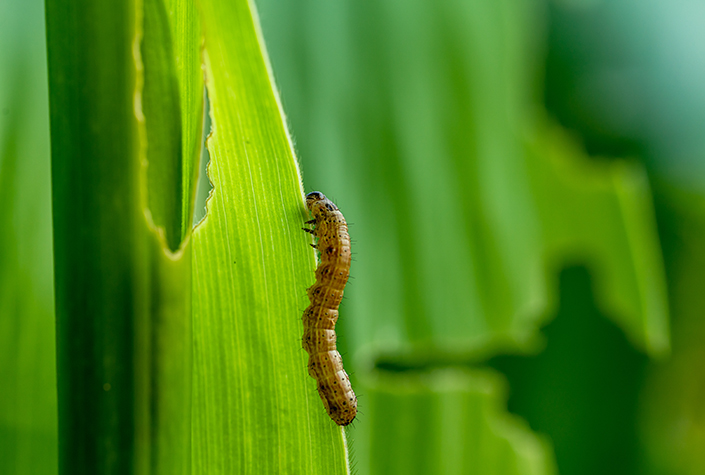‘Billion-dollar pests’: Can scientists design corn that resists devastation?

Two researchers in the College of Agriculture and Life Sciences will use a USDA grant to study corn resistance mechanisms against the insect pests, the fall armyworm and the western corn rootworm.
Michael Kolomiets, professor in the Department of Plant Pathology and Microbiology, and Julio Bernal, professor in the Department of Entomology, will collaborate on the cross-disciplinary project involving molecular genetics and entomology to increase resistance to these insect pests.
The fall armyworm and the western corn rootworm destroy plants in two ways: the fall armyworm eats leaves and aboveground organs; the western corn rootworm eats the roots. Both are highly destructive, invasive pests of global significance.
“In the U.S., the western corn rootworm is referred to as the ‘billion-dollar pest,’ and is also the most significant corn pest in Europe,” Bernal said. “The fall armyworm is an important pest in the U.S. and is decimating corn and other crops across Africa and Asia.”
Preliminary project data based on screening an extensive collection of corn mutants have identified genes in corn that produce novel hormone-like signal molecules that plants need to resist the two pests.
The newly identified genes allow the plants to create types of molecules called oxylipins. In humans and animals, oxylipins are called prostaglandins and control immune responses. About 60 percent to 80 percent of FDA-approved drugs in the United States target oxylipin pathways in humans, Kolomiets explained. The fact that we know so much about this pathway in humans but so little about its effect on plants is the inspiration for much of his research.
“My excitement about this project is that we will identify functions of this poorly understood group of molecules and their signaling pathways to improve crop productivity,” Kolomiets said. “About 600 to 700 oxylipins have been identified in different plant species. However, we know the function of only a few of them.”

